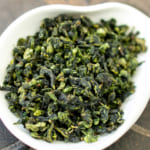- HOME >
- Japanese Teapot and Tea Equipment
Japanese Teapot and Tea Equipment
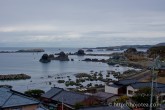
- [2013.12.23]
- Visiting Sado Island in Winter
I visited Sado Island to meet our potters, Watanabe Tozo and Shimizu Ken. This Island is situated in the north of Niigata prefecture where it was formed by submarine volcanos. For me, to get to Sado Island is like travelling overseas because it takes me 6 hours from my hometown, travelling by car and also …
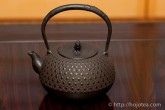
- [2013.10.22]
- Tetsubin Handling Procedure
I made this video a few years ago in order to demonstrate how to handle the tetsubin. For those who own tetsubin or planning to purchase one, please watch this video and learn.
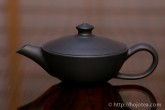
- [2013.10.04]
- Selecting teapot and lens has something in common
It is often mentioned that a clay teapot creates a mellower taste in a tea. However, the description of “mellow” somehow is not specific enough to describe the taste. In fact, a clay teapot will modify either body or aftertaste, and sometimes both; but some poor quality clay reduces both aftertaste and body. It is …
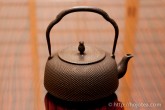
Many people are aware that a tetsubin effects the taste of water by making it smoother. But, do you know that different brands or different manufacturing method affects the taste remarkably too? I’ve carried out the following experiment to verify the effects of the taste between the different manufacturing processes. Kamayaki process that affects the …
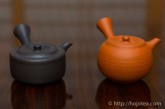
- [2013.08.14]
- Are not you choosing teapot just by color?
The colour and texture of the teapot varies a lot, where the same clay could turn red, purple or black based on just the firing technique. In addition, the use of different firing techniques not only changes the colour of clay, but also the taste and flavour of the tea when it is brewed. Therefore, …

Tetsubin produced from different brands are casted from different metal combinations Tetsubin, literally means “iron kettle” in Japanese. However it is not necessary built from 100% of iron. In Japan, every cast iron maker has their own formula to blend the iron with other minerals. As a result, the taste differs significantly from one brand …
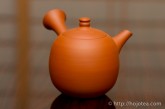
- [2013.03.25]
- Why is Zhuni/Shudei so famous?
Zhuni and red clay is of different meanings Zhuni is a famous name of clay. For teapot collectors in China and Japan, this name is very familiar. Both in Japanese and Chinese,it is written as 朱泥. Zhuni is the Chinese pronunciation, while it is called Shudei in Japanese. Both languages are referring to exactly …
PAGE 2 OF 2
- New Release of Anxi Traditional Oolong
- Anxi, located in Fujian province, China, is celebrated for its Tie Guan Yin tea. However, the Traditional Anxi Oolong from this region boasts a unique fruity aroma, distinguishing it from Tie Guan Yin. Anxi: A Renowned Hub for Oolong Tea Production in China Fujian Province, renowned for its rich tea heritage, boasts several prominent tea-producing …
- New Release of Lan Yun Tie Guan Yin from Anxi
- Lan Yun Tie Guan Yin from Anxi, is not just an ordinary Tie Guan Yin. It has a strikingly delightful flavor reminiscent of orchid flowers with silky-soft drinking sensation. Anxi, renowned as one of the three major Oolong tea production regions in China. Anxi is recognized as one of the three major Oolong tea-producing regions …
Popular ArticleJapanese Teapot and Tea Equipment
 2 types of clay used for Mumoyi Yaki in Sado Island
2 types of clay used for Mumoyi Yaki in Sado Island- In Japan, the pottery in Sado Island that uses natu...
 Selecting teapot and lens has something in common
Selecting teapot and lens has something in common- It is often mentioned that a clay teapot creates a...
 Iga Natural Red Clay from the Hometown of Ninja
Iga Natural Red Clay from the Hometown of Ninja- I discovered very interesting clay in Iga, a place kn...
 Akitsu Mumyoi Clay from the Great Sado Mountain Range
Akitsu Mumyoi Clay from the Great Sado Mountain Range- Red clay from A largest Gold Mine in Japan Sado Isla...
 A Shiboridashi, the perfect alternative of a Gaiwan
A Shiboridashi, the perfect alternative of a Gaiwan- Shiboridashi is one of the tea brewing equipments...
 Tetsubin Handling Procedure
Tetsubin Handling Procedure- I made this video a few years ago in order to demonst...
 Visiting Sado Island in Winter
Visiting Sado Island in Winter- I visited Sado Island to meet our potters, Watanabe T...
 Selecting Suitable Clay for Japanese Green Tea
Selecting Suitable Clay for Japanese Green Tea- I would like to explain the points on how to choose...
 The advantage and disadvantage with different type of filter on teapot
The advantage and disadvantage with different type of filter on teapot- I would like to share some points of teapot selecting...
 Why is Zhuni/Shudei so famous?
Why is Zhuni/Shudei so famous?- Zhuni and red clay is of different meanings...
Shop Info

Address:Lot No. T-215, 3rd Floor, The Gardens Mall, Mid Valley City, Lingkaran Syed Putra, 59200 Kuala Lumpur
Tel: +603-2287-4537
Business Hour: 10am to 10pm
Category
- New Arrival at HOJO Online Shop
- Featured Articles
- Newsletter
- Types of Tea
- Origin of Tea
- Teapot and Tea Equipment
- Tea Column
- How to enjoy tea
- Tea Processing
- How to choose quality tea
- Tea constituents and functional effect
- Safety of Tea
- Foods
- Tea Business Operation
- Hobby and Outdoor Activity
- Ranking of Tea
- Video
- FAQ
- Media Release
Profile

- AKIRA HOJO
- I invite you to experience my tea selections.I was born in Nagano, Japan. In university, I studied agricultural chemistry, and I have the master degree in food science. I worked in Japanese food industry for 10 years. I involved in R&D, QC and QA. As a factory manager, I implemented ISO9000 series and managed the factory.
- The Art of Tea Magazine
- We posted the article on “The Art of Tea Magazine No.9, the magazine is published in Taiwan. We featured some scientific view about the tetsubin
- New Straits Times
- The Malaysian National Newspaper, New Straits Times featured HOJO Tea on 17-Oct-2007.




